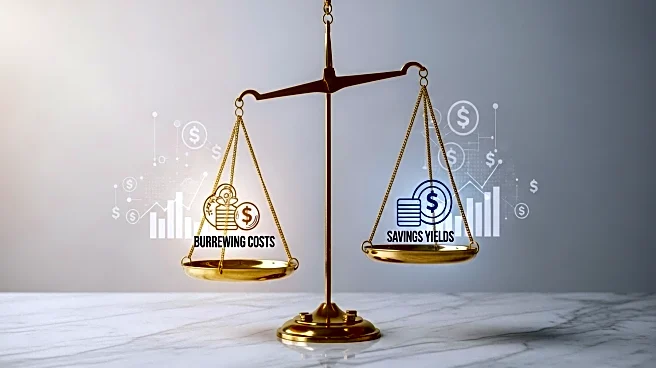What is the story about?
What's Happening?
The Federal Reserve has reduced its benchmark interest rate by 25 basis points, bringing it to a range of 4.00% to 4.25%. This decision follows previous reductions in late 2024 and reflects concerns over modest inflation pressures and a weakening job market. The rate cut influences the cost of borrowing, affecting interest rates on credit cards, auto loans, mortgages, and other financial products. Additionally, it impacts the yields savers receive on CDs and high-yield savings accounts. Economists anticipate further rate cuts before the end of the year, with upcoming Federal Open Market Committee meetings scheduled for October and December.
Why It's Important?
The Federal Reserve's decision to lower interest rates is significant for consumers and the broader economy. Lower borrowing costs can stimulate economic activity by encouraging spending and investment. Consumers with high-interest debt may benefit from refinancing options, while savers might see reduced returns on savings products. The housing market could experience increased activity if mortgage rates decline further. However, the rate cut also signals concerns about economic growth and employment, highlighting the Fed's efforts to balance inflation control with economic stability.
What's Next?
The Federal Open Market Committee is set to meet again in October and December, with expectations of additional rate cuts. Economists predict at least one more reduction before the New Year, potentially influencing further adjustments in consumer borrowing costs. Stakeholders, including financial institutions and borrowers, will closely monitor these developments to assess their impact on lending practices and economic conditions.
AI Generated Content
Do you find this article useful?














